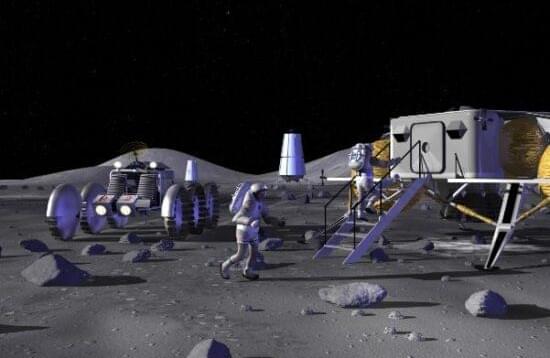The planets are similar in size to Jupiter.



What seems like a sci-fi movie can be turned into reality if Japan’s technology is to be believed. Humans can travel across different planets on a train in the near future! Yes, you read that right. Japan has laid out plans in a bid to send humans to Mars and the Moon, according to The Weather Channel India.
Japan has made plans to build a glass habitat structure that would copy Earth’s gravity, atmosphere and topography to make us feel like home.
Researchers from Japan’s Kyoto University in collaboration with Kajima Construction are working on this plan that might shake up space travel, the Weather Channel reported. The researchers announced this last week in a press conference, the EurAsian Times reported.
Multiple angles of Booster 7 experiencing an unexpected ignition during Raptor engine testing.
Video and Pictures from the NSF Robots. Edited by Jack (@theJackBeyer).
All content copyright to NSF. Not to be used elsewhere without explicit permission from NSF.
Click “Join” for access to early fast turnaround clips, exclusive discord access with the NSF team, etc — to support the channel.
Rolling Updates and Discussion: https://forum.nasaspaceflight.com/index.php?board=72.
Signs are positive after an explosion during tests this week, but SpaceX still ‘need to inspect all the engines’ of their Starship first-stage booster.
Head to https://www.squarespace.com/marcushouse to save 10% off your first purchase of a website or domain using code MARCUSHOUSE
Quite the inspirational week this one with the complete set of JWST First Images. Loads of Starship and Starbase news. Last week I mentioned that it was fire time for Starbase, and…WOW… I was not wrong there. SpaceX’s Starship Booster 7 has gone for repair after explosion. Falcon 9 launches for both Starlink and finally CRS-25. We also had the very first launch of Vega C. Rocket Lab firing off another Electron, and more. So enough of this intro. Let’s crack on with it!
Everyday Astronaut — Elon Musk Explains SpaceX’s Raptor Engine!
End Screen Music — Isle of Rain by Savfk.
Join the mailing list to be notified when I release a video.
https://marcushouse.space/email-list.
👕Like this shirt? Pick it up on any product you like here.
This article is an installment of The Future Explored, a weekly guide to world-changing technology. You can get stories like this one straight to your inbox every Thursday morning by subscribing here.
If nuclear fusion was a viable energy source, everything could be electrified. Electricity would be so cheap that projects that seem impossible now could be within our grasp, like commercial space flights, desalinating sea water, or direct air carbon capture.
Now, researchers from MIT say nuclear fusion — the power source of the sun itself — could become a reality by 2035, thanks to a new compact reactor called Sparc.

Two weeks before his death, famed scientist Stephen Hawking published a research article predicting parallel universes and along with the end of our own.
Hawking and co-author Thomas Hertog published their results in “A Smooth Exit from Eternal Inflation,” outlining how scientists may also be able to discover other universes using spaceships. According to Hertog, Hawking completed the work on his deathbed, leaving a legacy worthy of the Nobel Prize.

White House asks the public for ideas on what to do when we return to the Moon and cislunar space.
The U.S. has plans to return to the moon by the middle of this decade through NASA’s Artemis Program. But going back to the lunar surface and cislunar space isn’t just about putting boots on the ground. That’s why the White House Office of Science and Technology Policy on behalf of the Cislunar Science and Technology Subcommittee of the National Science and Technology Council has issued a request for ideas (RFI) with a deadline of Wednesday, July 20, 2022, for interested parties to make submissions.
The U.S. government has defined cislunar space as the entire region beyond Earth’s geostationary orbit subject to the gravity of both our planet and the Moon. The RFI covers both orbiting and lunar surface activities.
The government is seeking help in creating research priorities, technical standards and the development of a sustainable presence for human activity in cislunar space.
Forcing them to become servants could have a bad outcome. See the latest episode of The Orville, “From Unknown Graves”. https://www.imdb.com/title/tt12037520
Ron HelwigThe Orville keeps getting better. It’s already the best Trek.
Eric KlienAdmin.
Ron Helwig I find it very similar to the original Star Trek from the 60s.
Zach RichardsonThis has got to be the dumbest article I’ve ever read. I don’t even know if it’s satirical. Stupid fearmongering articles like this are exactly why what happened to you happened to you.
The message needs to be that we should be welcoming and embracin… See more.
SpaceX’s CRS-25 mission is set to lift off atop a Falcon 9 rocket from launchpad 39-A at the Kennedy Space Center in Cape Canaveral, Florida. Launch is targeted for 8:44 p.m. EDT (00:44 UTC), Friday, July 14. The Dragon spacecraft will deliver new science investigations, supplies, and equipment for the international crew, including an image spectrometer to be mounted on the exterior of the station to better understand how dust plumes affect our climate, and a study of immune aging and potential for reversing those effects. It also will carry an investigation from a team of students at Stanford University that will test the process of creating biopolymer soil composite, a concrete alternative, in microgravity. https://www.nasa.gov/mission_pages/station/research/news/spa…highlights.
Credit: NASA
#EMIT #ClimateChange #EarthScience #NASA #ISS #JPL